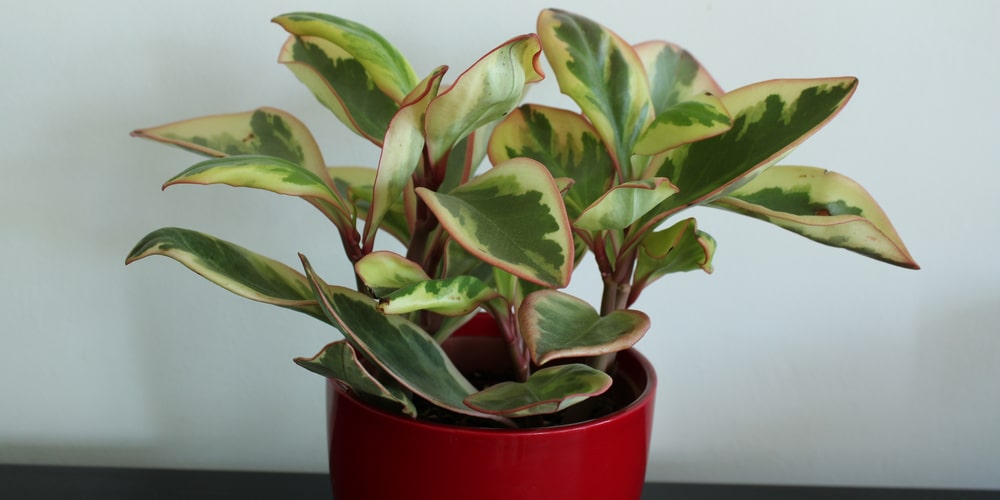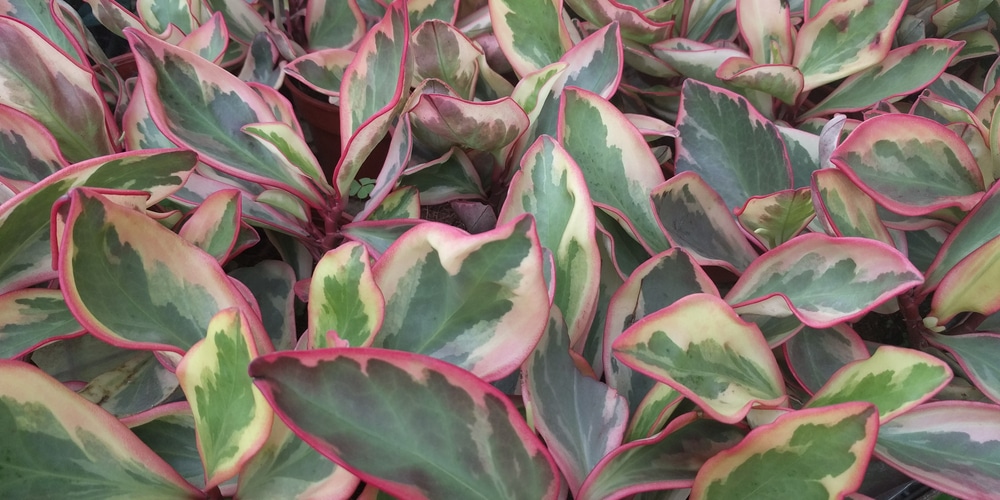Houseplants can be a stunning addition to your interiors. One of the most popular types of indoor plants is peperomia. This evergreen is native to Central and South America and comes in several varieties. If you want to add a touch of color to your house, you should consider getting your hands on the Peperomia Ginny.
This stunning indoor plant displays gorgeous tricolor foliage and doesn’t require much attention from your side. Still, you’ll want to keep reading this essential guide to learn how to enjoy this houseplant! Jump to the following sections to explore how to grow a thriving Peperomia Ginny.
| Botanical Name | Peperomia clusiifolia Ginny |
| Common Name | Peperomia Ginny, Rainbow Peperomia, or Peperomia Jelly |
| Plant Type | Perennial |
| Flower Color | The plant will rarely bloom. However, once it reaches maturity, it may display vertical pale green stalks: those are Peperomia’s blooms. |
| Size When Mature | Up to 12 inches tall and between 6 and 10 inches wide |
| Bloom Time | Not Applicable |
| Sun Requirements | Low to Medium Indirect Sun, Partial Sun |
| USDA Hardiness Zones | 10-12 |
| Soil PH Range | 6.0 to 6.6 |
| Soil Type | Well-draining, fertile, and slightly acidic |
| Water Needs | Medium |
| Native Area | Central and South America |
What you Need to Know About Peperomia Ginny
If you are a beginner gardener and want to find plants to add to your interiors, we recommend picking a Peperomia Ginny. This plant is aesthetically pleasing, relatively easy to grow, not toxic, and tolerant to most conditions. So, you’ll have little to worry about it!
This Peperomia variety displays showy foliage and can add texture (and gorgeous colors) to your house or office. Additionally, it stays compact, making it versatile for various locations. Its thick and succulent-like leaves are deep green in the center and have pink or red edges, which explain its common name: “rainbow peperomia.”
How to Care for Peperomia Ginny
As we mentioned before, taking care of Peperomia Ginny isn’t a challenging task. Still, to keep it healthy, you’ll need to learn about its needs and requirements (and fulfill them). To make things easier for you, we collected all the information about caring for a thriving Peperomia Ginny in the following sections.
Light
Most of the time, growing houseplant becomes challenging because of their lighting requirements. But one of the best things about Peperomia Ginny is that this plant isn’t fussy about light.
The only thing you must pay attention to is that it doesn’t get exposed to the direct sun, which may burn (or even kill) your plant. You can place your plant next to a window, better if not south or east-facing. Don’t forget to rotate the container frequently to ensure even growth.
Water and Soil Needs
One of the most common issues with peperomia Ginny results from over or underwatering. Let the soil dry completely between waterings to prevent problems.
Also, plant your peperomia in a suitable potting mix. Ensure it drains well: if necessary, consider adding sand or gravel. Compact soils will cause issues with root development and might result in root rot. You can also add a layer of orchid bark or perlite: it can serve as mulch and improve water retention.
Besides drainage, Peperomia ginny isn’t too fussy about soil pH. Still, it will perform better in slightly acidic environments. If you are having problems with your plant, consider making a soil test and amending the substrate accordingly.
Temperature Requirements
Peperomia Ginny thrives in warm and humid environments. It won’t survive temperatures below 50°F and will grow best between 60 and 80°F. That makes it an excellent houseplant. The humidity in your home is usually enough for your Peperomia to stay healthy.
But if you use AC during the summer or live in an arid climate, consider misting your plant with water to maintain adequate moisture around it. You can also make a pebble tray to improve the growing conditions.
Fertilizer
Feed your peperomia Ginny with a nutritious fertilizer during the growing season. Doing so will boost its growth and ensure it gets all the nutrients it needs to thrive. You can use a general houseplant fertilizer. Don’t forget to follow the instructions you find on the product’s label to avoid harming your plant!
Common Diseases
Peperomia Ginny rarely suffers from diseases. However, you must be careful with under or overwatering, which may cause severe issues to your plant.
Peperomias aren’t susceptible to attacks from pests, but you should still keep an eye on them and take action to prevent infestations. Wilting or curling, discoloration, or brown leaves, are usually symptoms of issues with too much or too little water. Adjust your watering schedule before taking other steps.
Peperomia Ginny Propagation
One of the best ways to propagate your Peperomia Ginny is by stem cuttings. While you might get satisfactory results from leaf cuttings, you’ll have much better chances with stem propagation. And if you know how to do it, you’ll have no problems getting plenty of new plants to decorate your house with or gift your friends.
Don’t worry: the process isn’t anything out of this world. All you have to do is take a couple of healthy cuttings. To do so, make a 45-degree cut below a leaf node and dip it in a solution with a rooting hormone.
Then, move the cuttings to an adequate container filled with well-draining and fertile potting mix. Don’t forget to water your cuttings regularly: you’ll see roots in less than a month. When the plant outgrows its container, move it to a bigger pot.
Related Article: Peperomia Scandens Care

